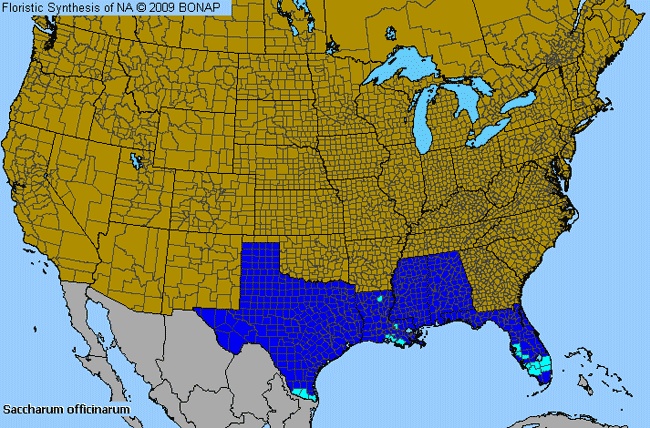Sugar-Cane (Saccharum officinarum)

Sugar-Cane Species Description

These plants are from foreign areas (those that occur outside of North America north of Mexico) that have been released intentionally or unintentionally. Plants that have been disseminated or escaped as a result of human activity, and become established somewhere within the United States, Canada or Greenland.
Allergenicity: Sugar-Cane (Saccharum officinarum) is a mild allergen.
Pollination: Occurs in following seasons depending on latitude and elevation: all year long.
Angiosperm - Flowering Monocot: Plants in this group have one embryonic leave (single cotyledon). This group include the grasses, lilies, orchids and palms.
Grass/Grass-like: Any plant characterized by parallel-veined leaves that arise from nodes in the stem, wrap around it for a distance, and leave, especially those grown as ground cover rather than for grain.
Perennial: Living for many years.
Wetland Plant: Plants growing in aquatic or wetland habitats. These include all known floating, submerged, and emergent taxa, plus those that are found in permanently or seasonally wet habitats.
Herbaceous Stem: Not woody, lacking lignified tissues.
Sugar-Cane Species Usage

Chewing Gum: Used as a source of chewing gum or gum flavoring.
Pharmacological: Used in medicine or pharmacological research.
Related Links

More Sugar-Cane (Saccharum officinarum) imagesby Jessie M. Harris from BONAP










